 Purchasing a home is an exciting time, but there is also a lot to manage. There are a lot of text messages, phone calls, and emails coming in. It is important for potential homeowners to keep them straight. Who are some of the most important people during the purchase process?
Purchasing a home is an exciting time, but there is also a lot to manage. There are a lot of text messages, phone calls, and emails coming in. It is important for potential homeowners to keep them straight. Who are some of the most important people during the purchase process?
The Real Estate Team
First, there are going to be a lot of important people on the real estate side of this transaction. Every home buyer should work with a real estate agent who can help them assess the market, arrange showings, and find the right home. There might also be interactions with other agents along the way who represent sellers. Keep in mind that there may be assistants, secretaries, and other agents who are part of a real estate team.
The Mortgage Team
The vast majority of potential home buyers require financing. Therefore, there will be multiple people who work on the mortgage side of this transaction as well. There will probably be a loan agent, an underwriter, and multiple assistants who navigate this side of the process. The mortgage team might also be responsible for arranging a home inspection and asking for a home appraisal. Potential home buyers might have to work with these individuals as well.
The Closing Team
If an offer is accepted, there will be a closing team as well. A real estate attorney will probably be required to process the documents. Therefore, a potential home buyer should be expected to work with multiple people from the law firm as well. The real estate attorney is responsible for collecting funds from all responsible parties and disbursing the money appropriately. There will probably be multiple assistants in the real estate attorney’s office who will be asking for information.
Keep These Relationships Straight
There is a lot that happens during a real estate transaction, and it is important for a potential home buyer to try to keep these relationships straight. Remember that the real estate agent should always be the first point of contact with any questions or concerns. A real estate agent probably has connections throughout the area that can help home buyers make this process easier. Nobody has to go through this process alone.

 There are many homeowners who are looking for help with storage. Even after moving in, many homeowners still have a lot of items they need to get rid of and this is where built-in storage solutions can be helpful. Even though some storage options might be pricey, there are inexpensive options available as well. Take a look at a few solutions below, and improve the storage situation.
There are many homeowners who are looking for help with storage. Even after moving in, many homeowners still have a lot of items they need to get rid of and this is where built-in storage solutions can be helpful. Even though some storage options might be pricey, there are inexpensive options available as well. Take a look at a few solutions below, and improve the storage situation.  When it comes to your mortgage, there are a lot of key terms that are important for every homebuyer to know, and this is no less true than when it comes to refinancing your most important investment. Instead of leaving what’s unknown up to chance, it’s important to be aware of exactly what you’re looking at so you can get the best mortgage product available. If you’re currently considering refinancing and don’t want to get snared by unknown terminology, here are some terms you’ll need to watch out for.
When it comes to your mortgage, there are a lot of key terms that are important for every homebuyer to know, and this is no less true than when it comes to refinancing your most important investment. Instead of leaving what’s unknown up to chance, it’s important to be aware of exactly what you’re looking at so you can get the best mortgage product available. If you’re currently considering refinancing and don’t want to get snared by unknown terminology, here are some terms you’ll need to watch out for. The FHA streamline refinance is not right for everyone, but if rates significantly dropped or you can afford a fixed-rate loan and want out of an ARM, it can make sense. If you’ll stay in the home for the foreseeable future, you can either save money on interest or have a more predictable payment.
The FHA streamline refinance is not right for everyone, but if rates significantly dropped or you can afford a fixed-rate loan and want out of an ARM, it can make sense. If you’ll stay in the home for the foreseeable future, you can either save money on interest or have a more predictable payment. Last week’s economic reporting included the National Association of Home Builders’ Housing Market Index reports on building permits issued and housing starts, The National Association of Realtors® reported on sales of previously owned homes, and weekly readings on mortgage rates and jobless claims were also published.
Last week’s economic reporting included the National Association of Home Builders’ Housing Market Index reports on building permits issued and housing starts, The National Association of Realtors® reported on sales of previously owned homes, and weekly readings on mortgage rates and jobless claims were also published. There are more than enough details involved in getting a mortgage and moving into your own home that you’ll want to know how to make the process as seamless as possible beforehand. However, there’s a chance you might not be aware of the things you can do to make it a little easier on yourself. If you’re currently looking for a home and are wondering how to streamline the approval process, here are some things to do before applying to minimize mortgage-related stress.
There are more than enough details involved in getting a mortgage and moving into your own home that you’ll want to know how to make the process as seamless as possible beforehand. However, there’s a chance you might not be aware of the things you can do to make it a little easier on yourself. If you’re currently looking for a home and are wondering how to streamline the approval process, here are some things to do before applying to minimize mortgage-related stress. It can be difficult to find a dream house, so many potential homeowners might be looking to save money by purchasing a home that they need to repair. Often referred to as a fixer-upper, this is a house that may require some extra work to restore to a livable condition. Not only is this a great opportunity to customize a home, but it could also be a valuable investment. At the same time, homeowners need to take out enough money to not only purchase the house but also cover the cost of repairs. How can potential homeowners decide what loan is best for a fixer-upper? There are a few options available.
It can be difficult to find a dream house, so many potential homeowners might be looking to save money by purchasing a home that they need to repair. Often referred to as a fixer-upper, this is a house that may require some extra work to restore to a livable condition. Not only is this a great opportunity to customize a home, but it could also be a valuable investment. At the same time, homeowners need to take out enough money to not only purchase the house but also cover the cost of repairs. How can potential homeowners decide what loan is best for a fixer-upper? There are a few options available.  Purchasing a home is a major decision, and it could be the most expensive financial transaction somebody ever makes. Therefore, it is important to get this right. One of the biggest hurdles for a new homeowner is coming up with enough money for the down payment. A lot of people believe they require 20 percent down to purchase a home. Saving this amount of money can be overwhelming, and some people are wondering, is this really necessary? There are several key points to keep in mind.
Purchasing a home is a major decision, and it could be the most expensive financial transaction somebody ever makes. Therefore, it is important to get this right. One of the biggest hurdles for a new homeowner is coming up with enough money for the down payment. A lot of people believe they require 20 percent down to purchase a home. Saving this amount of money can be overwhelming, and some people are wondering, is this really necessary? There are several key points to keep in mind.  FHA borrowers have an exceptional program available to them called the FHA streamline refinance. It’s a simple way to get a lower mortgage payment and/or lower rate, but it’s not for everyone.
FHA borrowers have an exceptional program available to them called the FHA streamline refinance. It’s a simple way to get a lower mortgage payment and/or lower rate, but it’s not for everyone.

